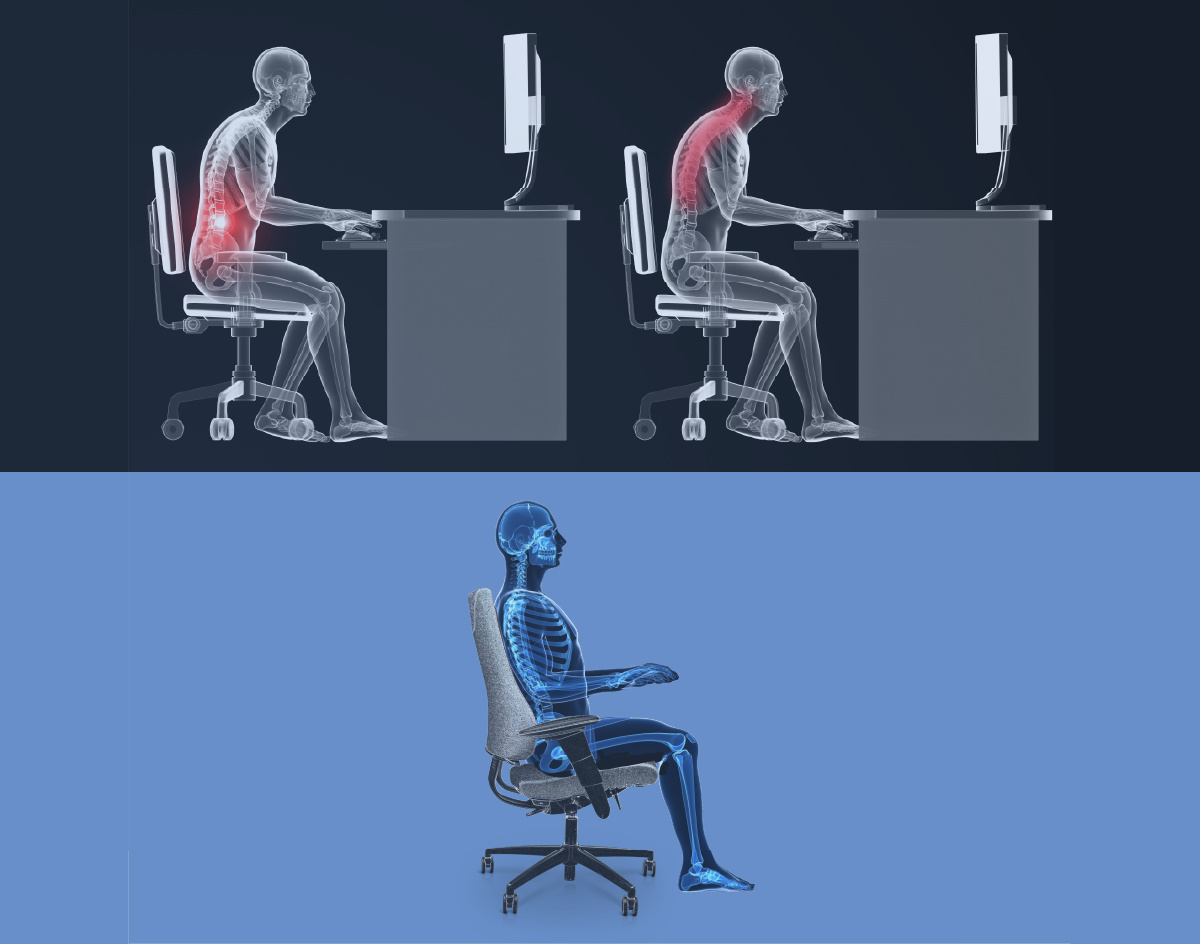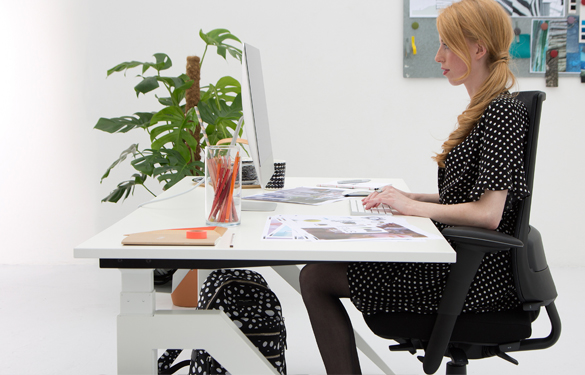At its core, biomechanics is the study of how the human body moves and responds to physical forces. In the context of seating, biomechanics looks at how the spine, pelvis, and limbs interact with a chair, how weight is distributed, how posture is supported, and how movement is accommodated throughout the day.
The science of sitting
When we sit, our bodies don’t just “rest.” We shift, lean, reach, and return to centre. A chair that truly supports health and performance must respond to these subtle movements. That’s where biomechanics comes in.
Two of the most critical forces involved in sitting are:
Normal force – the vertical pressure between your body and the seat. This needs to be distributed evenly to avoid pressure points that restrict circulation or cause discomfort. Too much pressure behind the knees, for example, can lead to numbness or strain.
Shear force – the horizontal friction between your body and the chair, especially when reclining. Poorly managed shear force can cause slippage, slouching, or even skin irritation over time.
These forces may seem subtle, but over time they can have a big impact on comfort, concentration, and health. That’s why forward-thinking designers have worked to integrate biomechanics into the very core of seating design.
A standout example is the Axia® chair, developed in the 1990s by BMA Ergonomics in collaboration with researchers from TU Delft and Erasmus University Rotterdam. Their findings confirmed the Axia’s ability to maintain effective seat depth and keep shear forces within safe, comfortable limits, even as users shifted and reclined.
Below - A short clip showing the RH Axia’s dynamic movement mechanism, based on ergonomic research. It illustrates how the chair encourages natural posture changes while maintaining support.
This scientific foundation is what set the Axia apart then, and it’s what continues to define it today. Now produced under the RH brand, part of the Flokk family, the chair remains unchanged in design and intent. The same principles, the same expertise, the same commitment to healthy movement.
So, when we say the RH Axia is designed with biomechanics in mind, we mean it quite literally. Backed by research, shaped by the body, and built to support it, through every shift, reach, and return.
Explore the Axia range
Different models for different people and needs. Find the one that fits you best.



